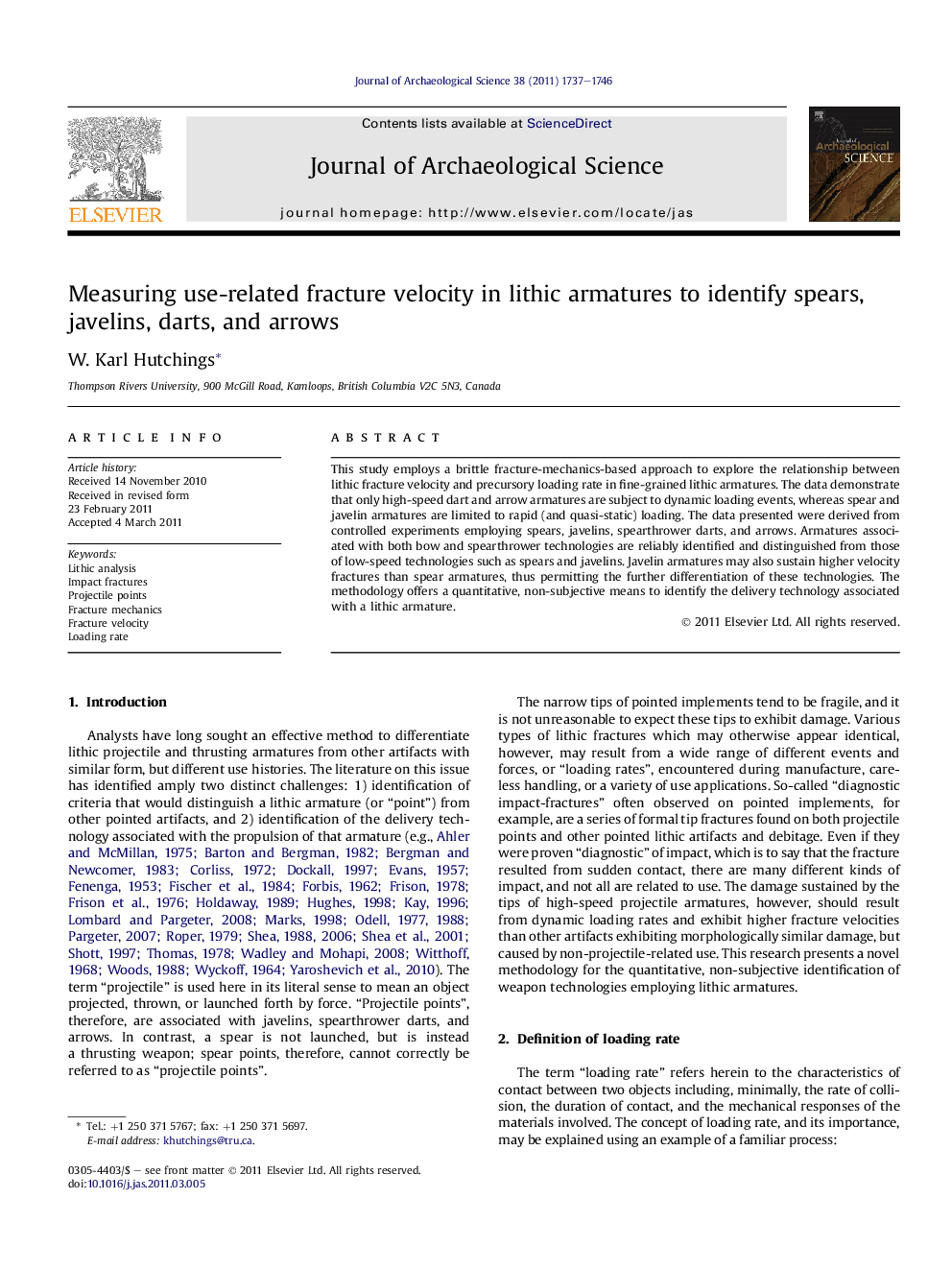| Article ID | Journal | Published Year | Pages | File Type |
|---|---|---|---|---|
| 1035868 | Journal of Archaeological Science | 2011 | 10 Pages |
This study employs a brittle fracture-mechanics-based approach to explore the relationship between lithic fracture velocity and precursory loading rate in fine-grained lithic armatures. The data demonstrate that only high-speed dart and arrow armatures are subject to dynamic loading events, whereas spear and javelin armatures are limited to rapid (and quasi-static) loading. The data presented were derived from controlled experiments employing spears, javelins, spearthrower darts, and arrows. Armatures associated with both bow and spearthrower technologies are reliably identified and distinguished from those of low-speed technologies such as spears and javelins. Javelin armatures may also sustain higher velocity fractures than spear armatures, thus permitting the further differentiation of these technologies. The methodology offers a quantitative, non-subjective means to identify the delivery technology associated with a lithic armature.
► Lithic fracture velocity (C˙) used to determine loading rate. ► C˙ for javelin & spear points within quasi-static & rapid ranges. ► C˙ for spearthrower dart & arrow points in upper end of dynamic range. ► Loading rate, not kinetic energy, is essential variable affecting C˙.
